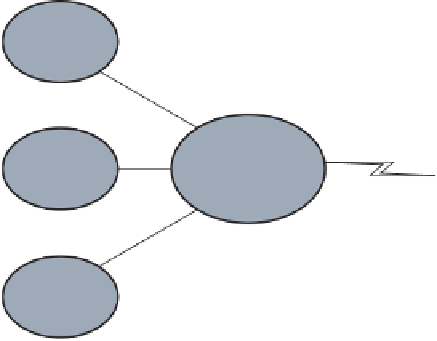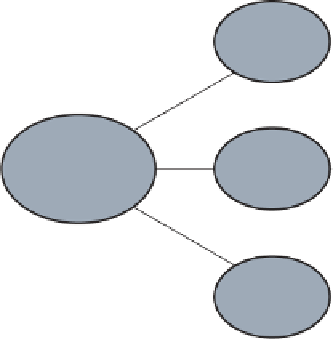Information Technology Reference
In-Depth Information
works well for slower, less reliable, or intermittent connections. The advantage of SMTP is that
a DC can send multiple replication requests simultaneously without waiting for the reply; the
reply can occur sometime later. So if you think of SMTP as an e-mail conversation, you can liken
RPC over IP to a chat session.
SMTP requires fairly complex configuration, and the administrative hassle is rarely worth it,
particularly with today's fast and reliable WAN connections. In addition, SMTP can't be used to
replicate domain directory partitions, so it can't be used in domains spanning multiple sites. It can
be used only to replicate the schema, global catalog, and configuration partitions. In a nutshell,
here are requirements for the bridgehead servers on both ends of an SMTP-configured site link:
• The SMTP feature must be installed on both servers.
• An enterprise certification authority must be configured on the network.
• The site link path must have a lower cost than an RPC over IP site link.
• You can't have DCs from the same domain in both sites.
• The DCs must be configured to receive e-mail.
RPC over IP is the only replication protocol used in intrasite replication.
Site Link Bridges
By default,
site link bridging
is enabled, which makes site links transi-
tive. In some circumstances, you don't want all site links to be transitive, such as when some
WAN links are slow or available only sporadically, as with a dial-up connection. To change the
transitive behavior of site links, turn off site link bridging and create site link bridges manually,
which enables you to manage replication traffic between sites more efficiently with some net-
work topologies.
Figure 10-26 shows a network with a hub-and-spoke WAN topology. Because of the transi-
tive nature of site links, Site1 replicates with bridgehead servers in Site2 and can also replicate
with bridgehead servers in Site2A, Site2B, and Site2C. If WAN connections between all sites are
fast and reliable, with plenty of bandwidth for replication traffic, this default behavior works well.
Keep in mind, however, that the same replication traffic is crossing the WAN links four
times, one for each site. On slower or heavily used WAN links between Site1 and Site2, this extra
traffic could be excessive. To better control the flow of replication traffic, disable automatic site
link bridging and create site link bridges between Site1 and Site2 and between Site2 and its satel-
lites. Replication traffic still flows between Site1 and Site2, but Site2 distributes the traffic to
satellite sites, so replication traffic crosses the Site1-Site2 WAN link only one time. You would
probably want to create site link bridges in the opposite direction as well.
10
Site2A
Site1A
Site2C
Site2
Site1
Site1B
Site2B
Site1C
Figure 10-26
Hub-and-spoke topology






Search WWH ::

Custom Search